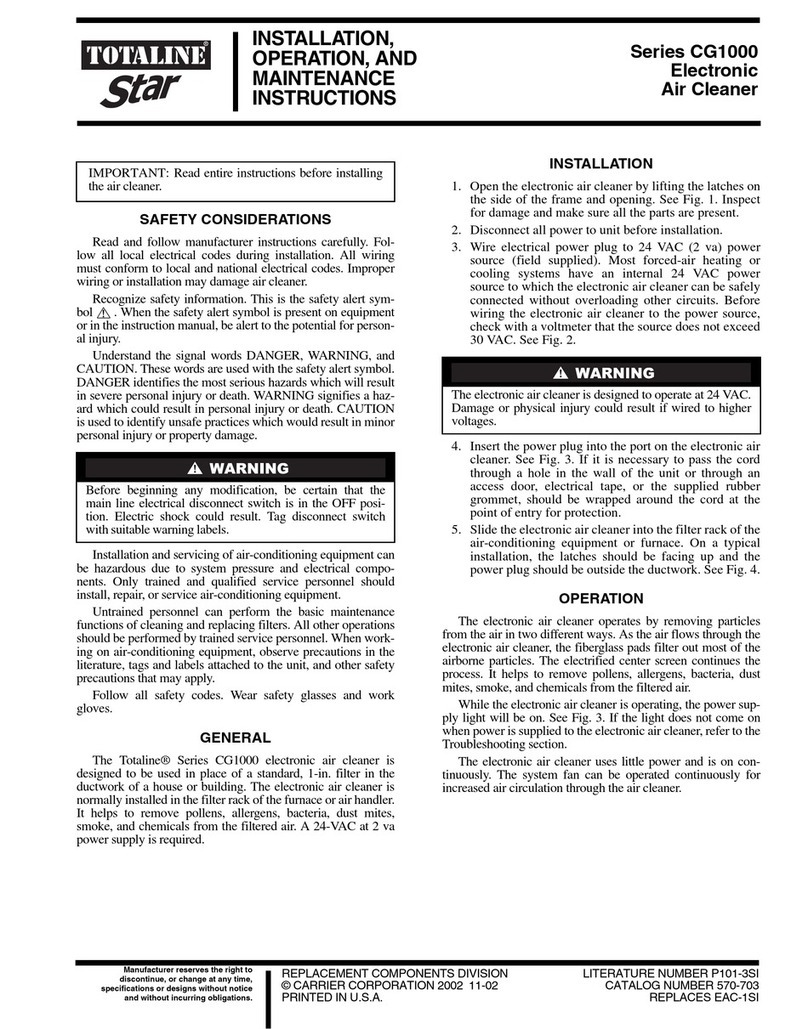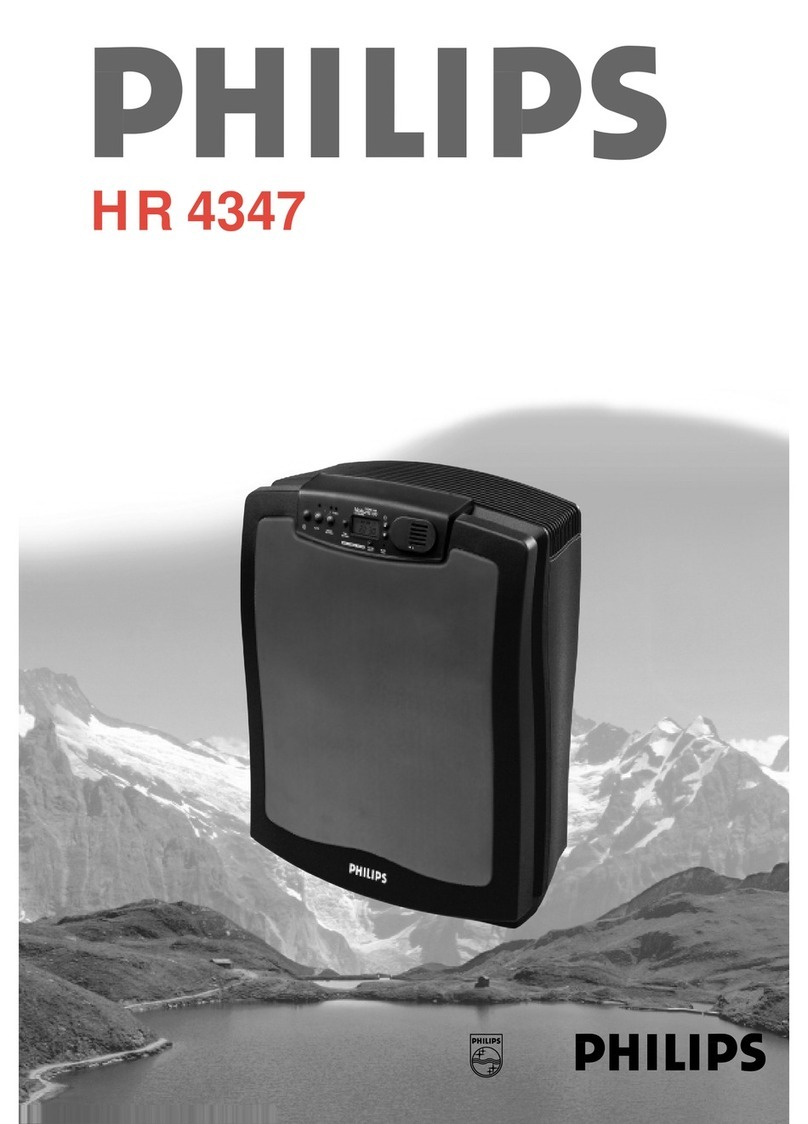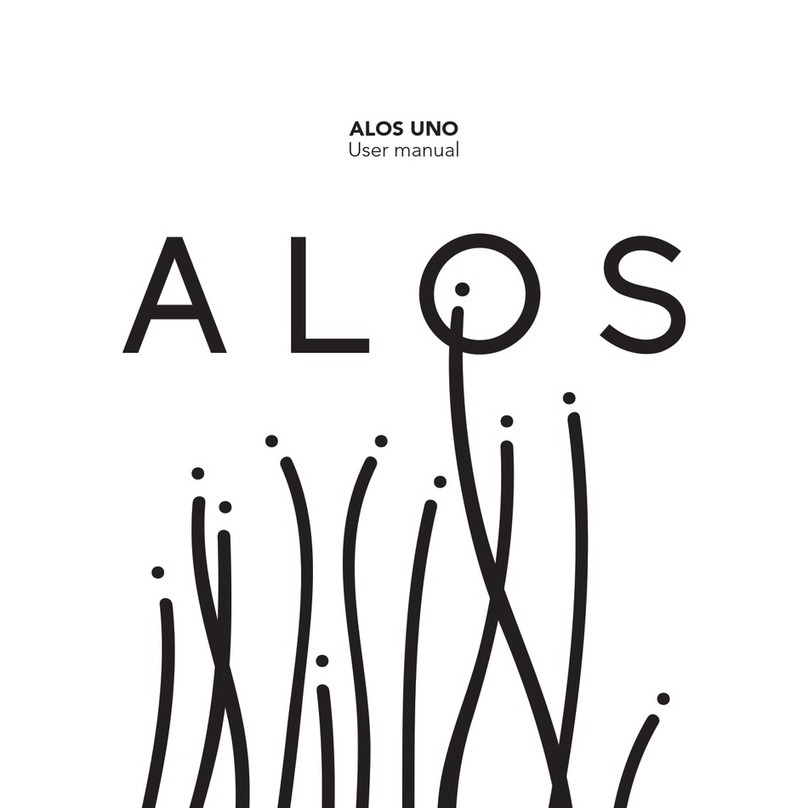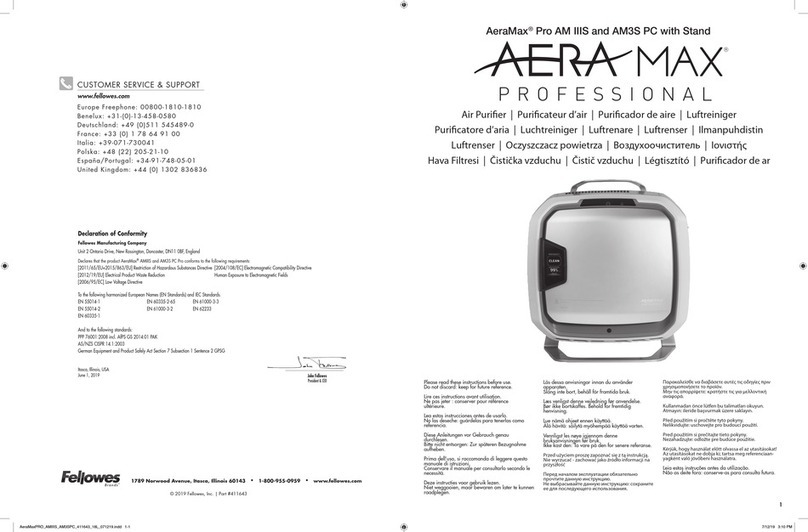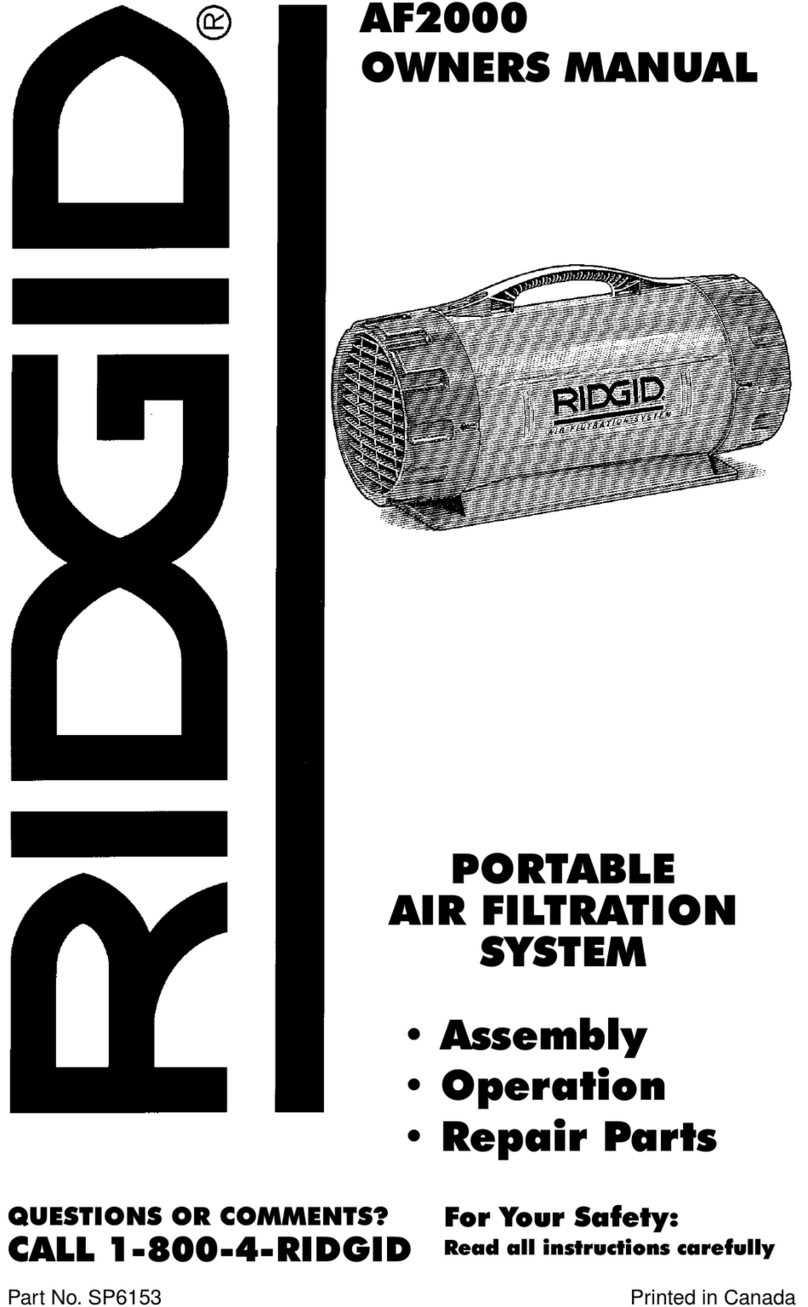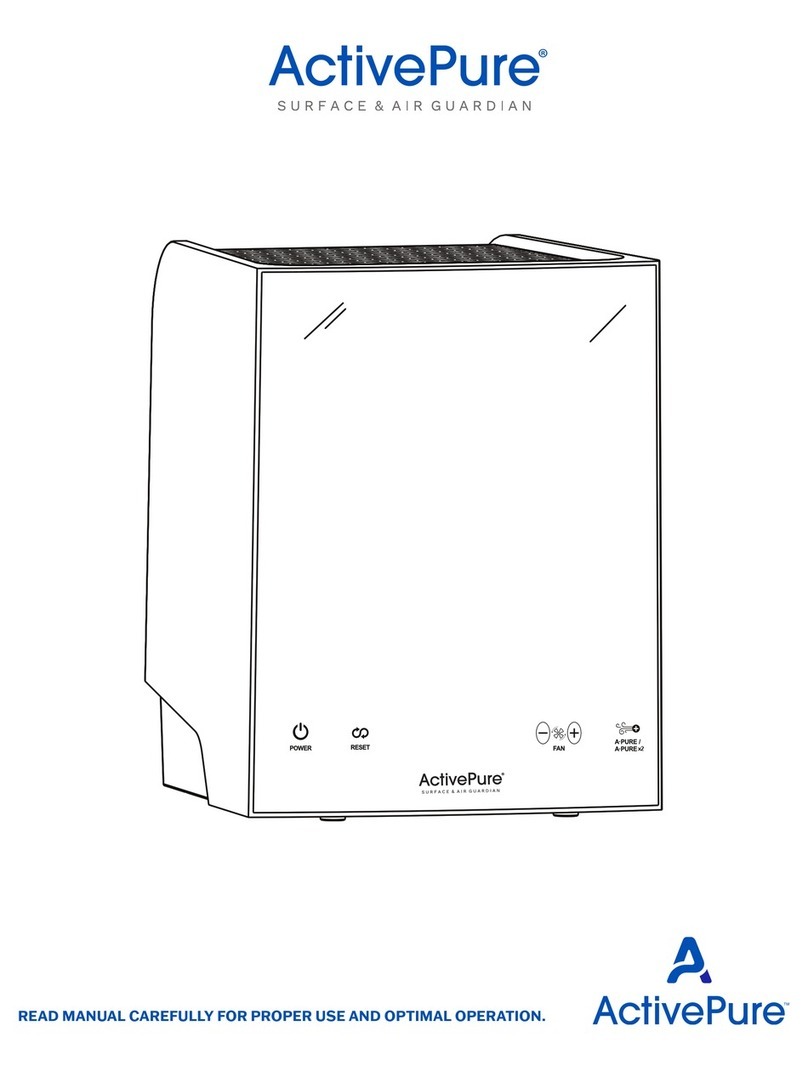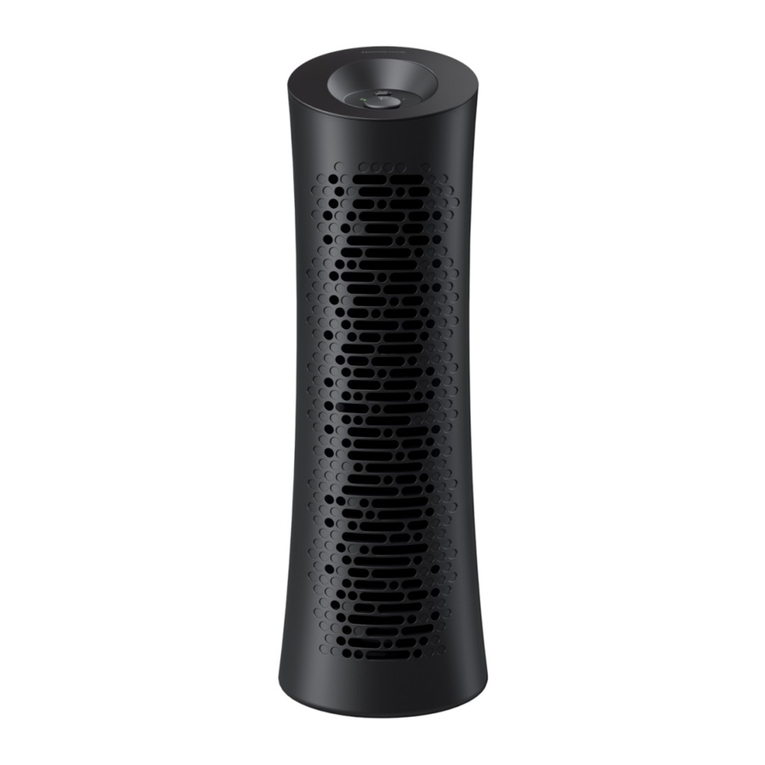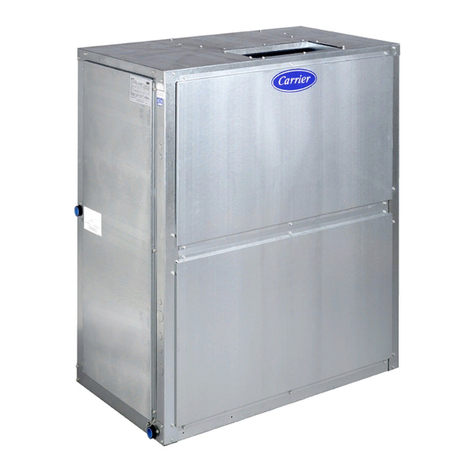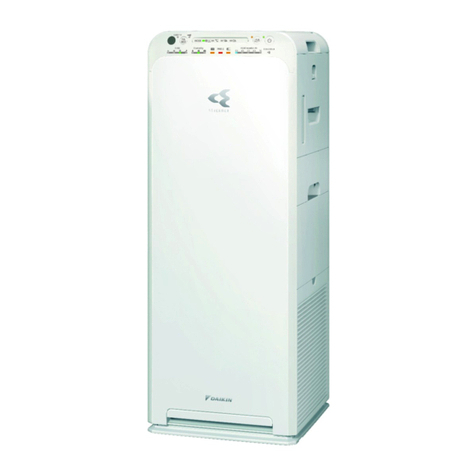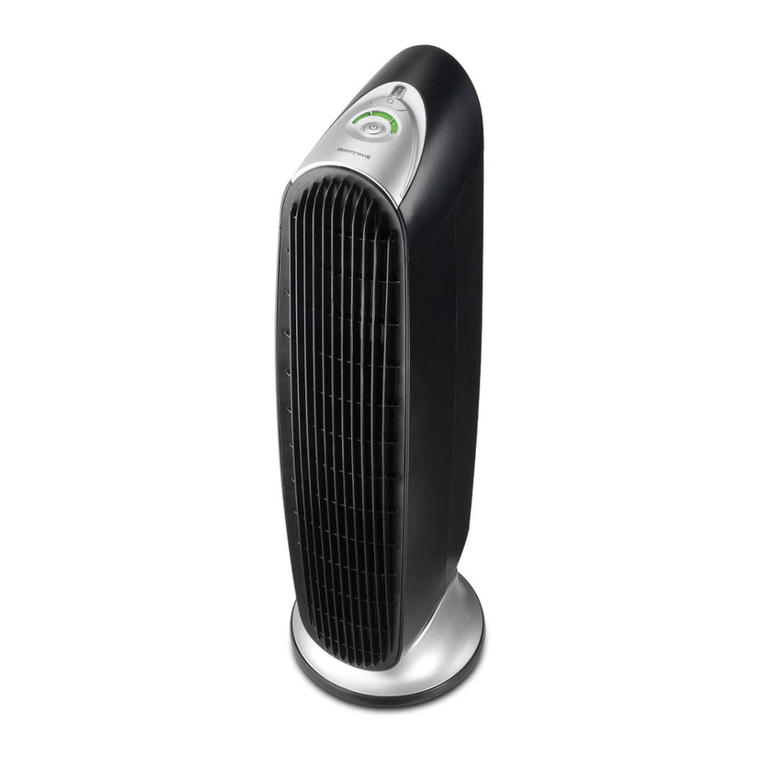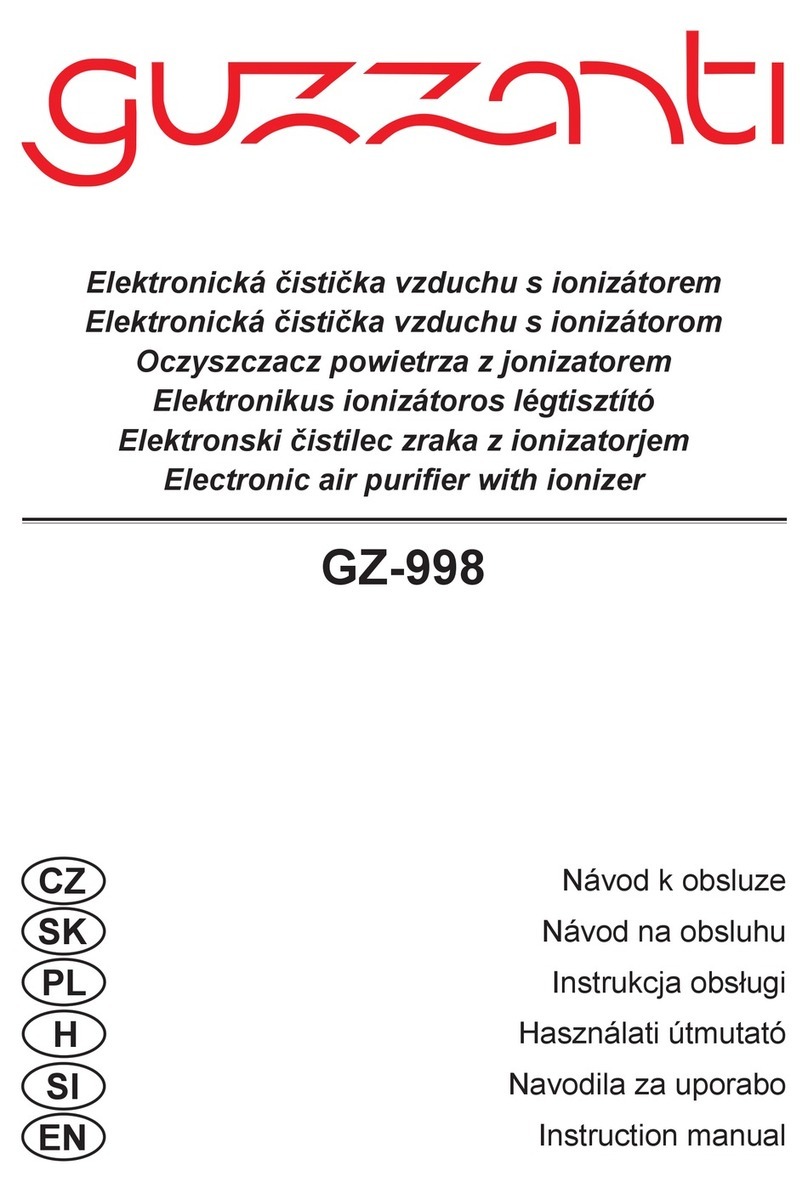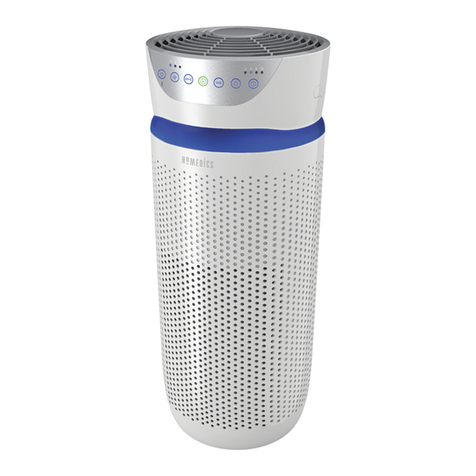BeaconMedaes dMED 7 User manual

BeaconMedæs
Dual medical air purifiers
dMED 7, dMED 13, dMED 25, dMED 35, dMED 50, dMED 70, dMED 80,
dMED 100, dMED 145
Instruction book


BeaconMedæs
Dual medical air purifiers
dMED 7, dMED 13, dMED 25, dMED 35, dMED 50, dMED 70,
dMED 80, dMED 100, dMED 145
From following serial No. onwards: API 048 393
Instruction book
Original instructions
Copyright notice
Any unauthorized use or copying of the contents or any part thereof is prohibited.
This applies in particular to trademarks, model denominations, part numbers and drawings.
This instruction book is valid for CE as well as non-CE labelled machines. It meets the
requirements for instructions specified by the applicable European directives as identified
in the Declaration of Conformity.
2012 - 01
No. 2920 7099 70
www.beaconmedaes.com

Table of contents
1 Safety precautions..........................................................................................................4
1.1 SAFETY ICONS...................................................................................................................................4
1.2 SAFETY PRECAUTIONS, GENERAL...........................................................................................................4
1.3 SAFETY PRECAUTIONS DURING INSTALLATION...........................................................................................5
1.4 SAFETY PRECAUTIONS DURING OPERATION..............................................................................................6
1.5 SAFETY PRECAUTIONS DURING MAINTENANCE OR REPAIR...........................................................................7
2General description........................................................................................................9
2.1 INTRODUCTION...................................................................................................................................9
2.2 AIR FLOW.......................................................................................................................................11
2.3 WSD AND FILTERS..........................................................................................................................13
2.4 CD DRYER......................................................................................................................................14
2.5 QDT FILTER...................................................................................................................................16
2.6 ELECTRICAL DIAGRAMS......................................................................................................................16
2.7 OPTIONAL EQUIPMENT.......................................................................................................................17
3 ES-MED Central controller...........................................................................................20
3.1 INTERFACE, ICONS AND MENU STRUCTURE.............................................................................................20
3.2 CENTRAL CONTROLLER (ES-MED) OPERATION.....................................................................................24
3.3 CONTROLLER ALARMS AND FAULTS......................................................................................................43
3.4 SERVICE MENU................................................................................................................................47
4 Installation.....................................................................................................................52
4.1 DIMENSION DRAWINGS.......................................................................................................................52
4.2 INSTALLATION PROPOSAL...................................................................................................................61
4.3 ELECTRICAL CONNECTIONS ................................................................................................................63
4.4 PICTOGRAPHS.................................................................................................................................63
Instruction book
2 2920 7099 70

5 Operating instructions.................................................................................................64
6 Maintenance..................................................................................................................68
6.1 SERVICE AGREEMENTS......................................................................................................................68
6.2 MAINTENANCE INSTRUCTIONS.............................................................................................................68
6.3 SERVICE KITS..................................................................................................................................70
6.4 STORAGE AFTER INSTALLATION...........................................................................................................70
6.5 DISPOSAL OF USED MATERIAL.............................................................................................................71
7 Adjustments and servicing procedures.....................................................................72
7.1 SERVICING THE WATER SEPARATOR DRAIN............................................................................................72
7.2 DD, PD AND PDP FILTER CHANGE.....................................................................................................73
7.3 CD UNIT DESICCANT CHANGE.............................................................................................................74
7.4 QDT FILTER MAINTENANCE................................................................................................................74
7.5 TESTING THE ELECTRONIC DRAIN VALVE................................................................................................76
8 Problem solving............................................................................................................77
9 Technical data...............................................................................................................80
9.1 FUSE VALUES..................................................................................................................................80
9.2 ELECTRIC CABLE SIZE.......................................................................................................................80
9.3 DEVICE SETTINGS.............................................................................................................................80
9.4 REFERENCE CONDITIONS AND LIMITATIONS............................................................................................81
9.5 TECHNICAL DATA..............................................................................................................................82
10 European Directives.....................................................................................................87
10.1 INSTRUCTIONS FOR USE....................................................................................................................87
10.2 PRESSURE EQUIPMENT DIRECTIVES......................................................................................................88
10.3 MEDICAL DEVICES DIRECTIVE............................................................................................................89
11 Declaration of conformity............................................................................................90
Instruction book
2920 7099 70 3

1 Safety precautions
1.1 Safety icons
Explanation
Danger for life
Warning
Important note
1.2 Safety precautions, general
General precautions
All responsibility for any damage or injury resulting from neglecting these precautions, or
non-observance of the normal caution and care required for installation, operation,
maintenance and repair, even if not expressly stated, will be disclaimed by the
manufacturer.
1. The air purifier units are designed for normal indoor use.
2. Installation, operation, maintenance and repair work must only be performed by authorised, trained,
specialised personnel.
3. Portable and mobile RF communications equipment can affect the unit. They should be used no closer to
any part of the unit, including cables, than the recommended separation distance calculated from the
equation applicable to the frequency of the transmitter (See EN 60601).
4. The operator must employ safe working practices and observe all related work safety requirements and
regulations:
• Wear ear protectors if applicable. People staying in environments or rooms where the sound pressure
level reaches or exceeds 90 dB(A) shall wear ear protectors.
• Never remove or tamper with the safety devices (e.g. safety valves regulators). All regulating and
safety devices shall be maintained with due care to ensure that they function properly. They may not
be put out of action.
• Proper protective clothing (face mask, eye protection, overall, disposable gloves and apron) must be
worn when installing, servicing or handling this equipment.
• Danger to health during inspection, cleaning or replacement and danger to the environment:
Contaminated filter elements, inlet screens, non-return valves or other components must be disposed
of using the hospital procedure for contaminated waste. Drain flasks must be sterilised using hospital
equipment and procedures. Any type of particles or liquid within a drain flask or inlet screen must be
treated as potentially biologically contaminated. Any moisture drained from vessels or other drain
points must be treated as biologically contaminated. Prior to transportation, items will be
decontaminated as well as possible and the contamination status shall be stated in a “Declaration of
Contamination” form (see annex).
Instruction book
4 2920 7099 70

• Immediately upon completion of work, remove any contaminated clothing and wash hands (and, if
necessary, contaminated tools) in a 2% glutaraldehyde solution and rinse under running water.
• A checklist / logbook will be made wherein the installer will mark the adherence of the installation to
the commissioning chapter of the instruction book.
• A validation of the quality of the air at the outlet should be carried out before the unit is put into
operation.
5. If any of the following statements does not comply with the applicable legislation, the stricter of the two
shall apply.
6. Installation, operation, maintenance and repair work must only be performed by authorized, trained,
specialized personnel.
7. A compressor is not considered capable of producing air of breathing quality. To obtain air of breathing
quality, the compressed air must be adequately purified according to the applicable legislation and
standards.
8. Before any maintenance, repair work, adjustment or any other non-routine checks, stop the equipment,
press the emergency stop button, switch off the voltage and depressurize the equipment. In addition, the
power isolating switch must be opened and locked.
9. Never play with compressed air. Do not apply the air to your skin or direct an air stream at people. Never
use the air to clean dirt from your clothes. When using the air to clean equipment, do so with extreme
caution and wear eye protection.
10. The owner is responsible for maintaining the dryer in safe operating condition. Parts and accessories shall
be replaced if unsuitable for safe operation.
11. It is not allowed to walk or stand on the equipment or its components. Protect the equipment against falling
objects.
1.3 Safety precautions during installation
1. The equipment must only be lifted using suitable equipment and in accordance with the applicable safety
regulations. Loose or pivoting parts must be securely fastened before lifting. It is strictly forbidden to
dwell or stay in the risk zone under a lifted load. Lifting acceleration and deceleration must be kept within
safe limits. Wear a safety helmet when working in the area of overhead or lifting equipment.
2. Install the equipment where the ambient air is as cool and clean as possible and within the limitations for
operation. It shall be protected from rain, snow or other precipitation and the distances to walls shall be
respected. Make sure that the environment is not potentially explosive.
Make sure that the ambient condition limits specified in the limits for operation are not exceeded during
the course of the plant lifetime and that they comply with the protection class of the unit.
Care must be taken to minimize the entry of moisture or any other impurities (e.g. internal combustion
engine exhaust, vehicle parking, access areas, hospital waste and disposal systems, vacuum system
exhausts, vents from medical gas pipeline systems, anaesthetic gas scavenging systems, ventilation system
discharges, chimney outlets and other sources of contamination) at the inlet of the compressor.
3. Any blanking flanges, plugs, caps or desiccant bags must be removed before connecting the pipes.
4. Air hoses must be of correct size and suitable for the working pressure. Never use frayed, damaged or
worn hoses. Distribution pipes and connections must be of the correct size and suitable for the working
pressure.
5. The air, aspirated by the compressor, must be free of flammable fumes, vapours and particles (e.g. paint
solvents) that can lead to internal fire or explosion.
6. Portable and mobile RF communications equipment can affect the unit. They should be used no closer to
any part of the unit, including cables, than the recommended separation distance calculated from the
equation applicable to the frequency of the transmitter (See EN 60601).
7. No external force may be exerted on the inlet and outlet piping. The connections must be free of strain.
8. If remote control is installed, the machine must bear a clear sign stating "Danger: This machine is remotely
controlled and may start without warning".
Instruction book
2920 7099 70 5

The operator has to make sure that the machine is stopped and that the isolating switch is open and locked
before any maintenance or repair. As a further safeguard, persons switching on remotely controlled
machines shall take adequate precautions to ensure that there is no one checking or working on the
machine. To this end, a suitable notice shall be affixed to the starting equipment.
9. Air-cooled machines must be installed in such a way that an adequate flow of cooling air is available and
that the exhausted cooling air does not recirculate to the inlet.
10. The electrical connections must be made in accordance with the applicable codes. The machines must be
earthed and protected against short circuits by fuses in all phases. A lockable power isolating switch must
be installed near the equipment.
11. On machines with automatic start-stop system or if the automatic restart function after voltage failure is
activated, a sign stating "This machine may start without warning" must be affixed near the instrument
panel.
12. Never remove or tamper with the safety devices, guards or insulation fitted on the machine. Every pressure
vessel or auxiliary installed outside the machine to contain air above atmospheric pressure must be
protected by a pressure-relieving device or devices as required.
13. Piping or other parts with a temperature in excess of 80˚C (176˚F) and which may be accidentally touched
by personnel during normal operation must be guarded or insulated. Other high-temperature piping must
be clearly marked.
14. For water-cooled machines, the cooling water system installed outside the machine has to be protected by
a safety device with set pressure according to the maximum cooling water inlet pressure.
15. If no safety valve is present in the air net close to the desiccant dryer (e.g. safety valve of compressor),
full flow safety valves must be installed on the dryer vessels.
16. If the maximum pressure of the compressor is higher than the design pressure of the dryer, a full flow
safety valve must be installed between the compressor and the dryer in order to blow off the excessive
pressure in case the safety valve of the dryer should be out of order or blocked.
Also consult sections General safety precautions, Safety precautions during operation and
Safety precautions during maintenance or repair..
These precautions apply to machinery processing or consuming air or inert gas.
Processing of any other gas requires additional safety precautions typical to the application
which are not included herein.
Some precautions are general and cover several machine types and equipment; hence
some statements may not apply to your equipment.
1.4 Safety precautions during operation
1. Always be careful when touching any piping or components of the dryer during operation.
2. Use only the correct type and size of hose end fittings and connections. When blowing through a hose or
air line, ensure that the open end is held securely. A free end will whip and may cause injury. Make sure
that a hose is fully depressurized before disconnecting it.
3. Persons switching on remotely controlled machines shall take adequate precautions to ensure that there
is no one checking or working on the machine. To this end, a suitable notice shall be affixed to the remote
start equipment.
4. Never operate the equipment in the presence of flammable or toxic fumes, vapours or particles.
5. Never operate the machine below or in excess of its limit ratings.
6. Keep all bodywork closed during operation. Bodywork should be opened for short periods only, e.g. to
carry out routine checks. Wear ear protectors when removing a panel.
7. People staying in environments or rooms where the sound pressure level reaches or exceeds 90 dB(A)
shall wear ear protectors.
8. Periodically check that:
• All guards are in place and securely fastened
Instruction book
6 2920 7099 70

• All hoses and/or pipes inside the machine are in good condition, secure and not rubbing
• There are no leaks
• All fasteners are tight
• All electrical leads are secure and in good order
• Safety valves and other pressure-relief devices are not obstructed by dirt or paint
• Air outlet valve and air net, i.e. pipes, couplings, manifolds, valves, hoses, etc. are in good condition,
free of wear or abuse
9. Do not remove any of, or tamper with, the sound-dampening material.
10. Never remove or tamper with the safety devices, guards or insulations fitted on the machine. Every pressure
vessel or auxiliary installed outside the machine to contain air above atmospheric pressure shall be
protected by a pressure-relieving device or devices as required. All regulating and safety devices shall be
maintained with due care to ensure that they function properly.
11. To safeguard correct operation of the equipment it is recommended to:
• Monitor the outlet dew point at all occasions.
• When possible, install a CO sensor/monitor with alarms.
• The unit must be installed in a network which complies with the legislation Medical Devices Directive
93/42/EC and with the harmonized standard EN ISO 7396-1.
Also consult sections General safety precautions, Safety precautions during installation
and Safety precautions during maintenance or repair..
These precautions apply to machinery processing or consuming air or inert gas.
Processing of any other gas requires additional safety precautions typical to the application
which are not included herein.
Some precautions are general and cover several machine types and equipment; hence
some statements may not apply to your equipment.
1.5 Safety precautions during maintenance or repair
1. Always use the correct safety equipment (such as safety glasses, gloves, safety shoes, etc.).
2. Use only the correct tools for maintenance and repair work.
During use, it is possible that tools will become contaminated with oil or grease. It is therefore important
that tools are cleaned and degreased following any maintenance operation, especially if the same tools are
subsequently used with an Oxygen System. When the tools come into contact with possible bacteria
contaminated parts (e.g. if the bacterial filters were ruptured), they must be sterilised after completion.
3. Use only genuine spare parts.
4. All maintenance work shall only be undertaken when the machine has cooled down and is depressurized.
5. A warning sign bearing a legend such as "Work in progress - do not start" shall be attached to the starting
equipment.
6. Persons switching on remotely controlled machines shall take adequate precautions to ensure that there
is no one checking or working on the machine. To this end, a suitable notice shall be affixed to the remote
starting equipment.
7. Close the dryer air outlet valve before connecting or disconnecting a pipe.
8. Before removing any pressurized component, effectively isolate the machine from all sources of pressure
and relieve the entire system of pressure. Before disconnecting any piping, pneumatically isolate the
section and slowly bring the pressure to atmospheric pressure. Do not suddenly open any isolating valve
that may cause rapid evacuation of any section that may be at high pressure. Open valves slowly and allow
sufficient time for the pressure to stabilise.
9. Never use flammable solvents or carbon tetrachloride for cleaning parts. Take safety precautions against
toxic vapours of cleaning liquids.
10. Scrupulously observe cleanliness during maintenance and repair. Keep dirt away by covering the parts
and exposed openings with a clean cloth, paper or tape.
Instruction book
2920 7099 70 7

11. Never weld on, or in any way modify, pressure vessels.
12. Whenever there is an indication or any suspicion that an internal part of a machine is overheated, the
machine shall be stopped but no inspection covers shall be opened before sufficient cooling time has
elapsed; this to avoid the risk of spontaneous ignition of the oil vapor when air is admitted.
13. Never use a light source with open flame for inspecting the interior of a machine, pressure vessel, etc.
14. Make sure that no tools, loose parts or rags are left in or on the equipment.
15. All regulating and safety devices shall be maintained with due care to ensure that they function properly.
They may not be put out of action.
16. Before clearing the machine for use after maintenance or overhaul, check that operating pressures,
temperatures and time settings are correct. Check that all control and shut-down devices are fitted and that
they function correctly.
17. Protect the motor, electrical and regulating components, etc. to prevent moisture from entering them, e.g.
when steam-cleaning.
18. Make sure that all sound-damping material and vibration dampers, e.g. damping material on the bodywork,
is in good condition. If damaged, replace it by genuine material from the manufacturer to prevent the
sound pressure level from increasing.
19. Never use caustic solvents which can damage materials of the air net, e.g. polycarbonate bowls.
20. The following safety precautions are stressed when handling desiccant:
• Take precautions not to inhale desiccant dust.
• Check that the working area is adequately ventilated; if required, use breathing protection.
• Do not overfill the dryer when replacing desiccant.
Also consult sections General safety precautions, Safety precautions during installation
and Safety precautions during operation .
These precautions apply to machinery processing or consuming air or inert gas.
Processing of any other gas requires additional safety precautions typical to the application
which are not included herein.
Some precautions are general and cover several machine types and equipment; hence
some statements may not apply to your equipment.
Instruction book
8 2920 7099 70

2 General description
2.1 Introduction
Description
High quality air is of vital importance to many industries, but nowhere as literally as in the medical sector.
The purity of the compressed air for certain hospital applications is crucial. The air drawn from our
environment however, especially in cities or industrial areas, is rarely of a sufficient quality for medical
purposes.
For this application, BeaconMedæs has designed the dual medical air purifier range (dMED 7 up to dMED
145). The dMED takes air from any regular compressor and treats it to become ultra clean. It consists of a
number of components, which together, after the commissioning certification, produce air with a quality
matching the Pharmacopoeia legislation.
The dMED is primarily aimed at the health care sector where applications like breathing air in operating
theatres and surgical air to drive surgical tools demand high quality air.
A dMED consists of 2 independent air treatment units, each consisting of following stages of cleaning:
• A water separator (WSD) to eliminate free water from the compressed air, thus ensuring good operation
of the desiccant dryer.
• Two coalescing filters (DD filter and PD filter) to remove contaminating particles and oil droplets.
• A desiccant dryer (CD dryer) to lower the pressure dew point (PDP) to -40 ˚C (-40 ˚F), eliminating the
risk of condensation and strongly reducing water-related problems like bacteria growth.
• The QDT+ filter reduces hydrocarbons like oil vapour and smells to harmless levels and converts excessive
concentrations of CO into CO2.
• A particle filter (PDp filter) to eliminate particles that may have migrated out of the desiccant dryer.
Both units are controlled by a central controller (ES-MED). This central controller activates one unit and will
switch to the other one after a certain amount of time has elapsed. This guarantees a constant delivery of
purified air and also ensures service can be performed on one unit whilst the system is still operating. At all
times an indication of dew point and pressure can be retrieved from the display.
Key qualities
• Pharmacopoeia compliant:
The European Pharmacopoeia legislation accurately defines the required quality for breathing air in
hospitals, medical theatres and ambulatory centres. BeaconMedæs has adopted this quality level for the
dMED range and was certified by an external authority.
• Company certification according to EN ISO 13485:
Hospital equipment with an influence on patient health must be certified to the Medical Devices Directive
(MDD 93/42/CE). This requires that the manufacturer is certified according to EN ISO 13485 and
organises strict product follow-up once in the field.
Instruction book
2920 7099 70 9

General views
dMED, general view
1 Air inlet
2 Water separator (WSD)
3 DD filter
4 PD filter
5 CD dryer
6 QDT+ filter
7 PDp filter
8 Pressure regulator
9 Safety valve
Instruction book
10 2920 7099 70

10 Air outlet
11 ES-MED controller
Important
The dual medical air purifier unit (dMED) is designed, manufactured and inspected
according to the legislation mentioned.
Always consult the local legislation on this topic, since the specifications of the air quality
can be different.
A dMED unit is considered as an active medical device, relying on a source of electrical
energy for its operation.
2.2 Air flow
Flow diagram
WSD Water trap with automatic drain 10 Dew point transducer
Instruction book
2920 7099 70 11

DD, PD Filter with liquid trap, automatically
drained
12/ 15 Pressure regulator with gauge
PDp Dust filter 13 Safety valve
1, 8 Flow restriction 18 Non-return valve
2, 9, 20 Pressure transducer 21 Pressure switch
3 Reservoir open to atmosphere
with inlet pipe above fluid level
QDT1, QDT2 QDT filter (basic version, only
activated carbon) / QDT+ filter
(activated carbon + CO catalyst
(add-on option))
4, 16, 19, 22, 23 Valve CD1, CD 2 CD dryer
5 Silencer IN Inlet
6 Shuttle valve OUT Outlet
7 Desiccant
Description
Compressed air enters water trap (WSD), eliminating liquid water from the air. Next, the air flows through
DD and PD filters, removing contaminating particles and oil mist. The air then enters the CD dryer, eliminating
water damp and producing dry air with a pressure dew point of minimum -31 ˚C (-23.8 ˚F). Next is the QDT
filter where oil vapour and smells of the dried air are reduced (active carbon) and where the conversion of
CO into CO2 takes place (catalyst in QDT+). Finally the air flows through the PDp filter, hereby eliminating
remaining dust particles for absolute purity.
Pressure switch (21) operates as an hardwired alarm in case a failure with the ES-MED controller should
occur. Should the ES-MED fail to operate the compressors, resulting in a decrease of the pressure, each
compressor will start to operate independently once their outlet pressure reaches a certain critical pressure
level (emergency forced local). The pressure switch, installed on the inlet of the dMED, thus linked to the
outlet pressure of each compressor will also be triggered at this pressure level, resulting in a Plant fault being
transmitted to the building management system.
Specifications of the outlet air can be found in section Reference conditions and limitations.
Instruction book
12 2920 7099 70

2.3 WSD and filters
WSD and filters in the air flow
WSD and filter overview
Instruction book
2920 7099 70 13

Water separator with drain (WSD) (1)
WSD’s are general-purpose water separators for free water removal from compressed air.
Centrifugal force created in the cyclone throws free water (droplets) to the wall, from where it flows down to
the bottom of the bowl. The water is automatically discharged when a given level is reached. A drain valve
is provided for manual draining of the bowl.
DD filter (2)
The DD filter is a coalescing filter for general-purpose filtering, removing oil aerosols to 0.1 mg/m3 (0.1 ppm)
and particles down to 1 micron. The filter is equipped with a drain. Typical pressure drop over filter is 0.05
bar (0.73 psi) when dry and 0.12 bar (1.74 psi) when saturated.
The air flow is from inside to outside the filter element.
PD filter (3)
The PD filter is a high efficiency coalescing filter, removing oil aerosols to 0.01 mg/m3 (0.01 ppm) and
particles down to 0.01 micron. The filter is equipped with a drain. Typical pressure drop over filter is 0.08
bar (1.16 psi) when dry and 0.2 bar (2.9 psi) when saturated.
The air flow is from inside to outside the filter element.
PDp filter (4)
The PDp is a high efficiency particle filter for dust protection, removing particles down to 0.01 micron.
Pressure drop over filter is 0.08 bar (1.16 psi) when dry.
The air flow is from outside to inside the filter element.
The DD, PD and PDp filters are equipped with a differential pressure gauge, indicating the
pressure drop over the filter.
An electronic water drain (EWD) on WSD, DD filter and PD filter can be provided as option
(see section Optional equipment).
2.4 CD dryer
Description
The construction of the air dryer is simple, reliable and easy to service. A dryer basically consists of two
towers, containing the adsorption material (desiccant). This desiccant is a very porous grain material, able to
adsorb large amounts of water vapour.
Instruction book
14 2920 7099 70

Dryer flow diagram
Reference Designation Reference Designation
1 Air inlet 7 Air outlet
2 Inlet selector valve 8, 9 Solenoid valve
3, 4 Desiccant tower 10, 11 Silencer
5 Purge nozzle PI Pressure gauge
6 Outlet selector valve
Operation principle (version without purge control)
The operation cycle of the dryer is repetitive and is controlled by a factory-set timer, programmed in the
central controller.
While the desiccant in one tower dries the compressed air, the desiccant in the second tower is being
regenerated. Regeneration of the desiccant is achieved by means of purge air from the drying tower.
The compressed air entering the dryer is led to one of the towers by means of the inlet selector valve. The
position of the selector valve depends on the condition (activated or not) of the solenoid valves. While the air
flows upwards through the tower, the desiccant adsorbs the water vapour and the compressed air is dried.
The dried air leaves the dryer via the outlet selector valve.
A small portion of the dried air passes a nozzle (5), expands to atmospheric pressure and flows downwards
through the other tower, regenerating (drying) the desiccant.
The regeneration air is released via the solenoid valve and the silencer of the regenerating tower. The solenoid
valves are controlled by the timer.
After a pre-set period, the function of the towers is reversed. The fully regenerated tower will now dry the
air, while the desiccant in the other tower will be regenerated.
By default, the regeneration timer will restart from the beginning of the cycle in case of a power failure during
operation.
Instruction book
2920 7099 70 15

Purge control version (available as option)
Description: see section Optional equipment.
2.5 QDT filter
Air flow
Reference Name
A Air inlet
B Air outlet
1 Activated carbon (QDT and QDT+)
2 Catalyst (optional) (QDT+)
Description
The dried compressed air enters the QDT/QDT+ filter
A QDT filter contains active carbon, reducing volatile organic compounds (VOC) and hydrocarbons (odours,
oil vapours) to harmless levels.
A QDT+ filter contains active carbon and catalyst material, converting excessive concentrations of CO into
CO2.
Depending on the size of the unit, the QDT/QDT+ filter consists of one, two or three cylinders.
2.6 Electrical diagrams
The service diagram can be found in the ES-MED control box.
Instruction book
16 2920 7099 70

2.7 Optional equipment
All responsibility for any damage or injury resulting from neglecting these precautions, or
non observance of the normal caution and care required for installation, operation,
maintenance and repair, even if not expressly stated, will be disclaimed by the
manufacturer.
Some precautions are general and may not apply to your optional equipment.
Precautions
1. Make sure that all electrical wiring is installed in compliance with the applicable regulations.
2. Installation must always be performed by a qualified technician.
3. Installation must be carried out in compliance with the circuit diagrams and connection drawings provided.
Available options
•Electronic drain (EWD)
The electronic drain is optional on the WSD, the DD filter and the PD filter.
The electronic drain is a zero-loss, electronically operated drain valve, specially designed to drain oil and
water. A sensor detects the liquid level. If the level exceeds a preset value during a fixed programmed
time, a solenoid valve is activated and the condensate is discharged via drain outlet (6). Next, the solenoid
valve closes and condensate is collected again. This way, the loss of air is reduced to a minimum.
If the micro-controller of the EWD registers a malfunction, the automatic drain valve will automatically
change to alarm mode, visible on the display (5). This alarm signal can be relayed via a potential-free
contact.
EWD electrical connections:
Instruction book
2920 7099 70 17

Reference Name
COM Common
L Phase
N Neutral
NC Normally closed contact
NO Normally open contact
PE Earthing
(1) Voltage-free contacts
Extra electric wiring to connect the potential-free contacts and an external test button can
be provided.
Remove the manual or automatic drain of the water separator (WSD) or filters (DD and
PD) before installing the EWD.
•Voltage-free contact (DD, PD and PDp filters)
A voltage-free contact, closing at a pressure drop of 0.35 bar (5.08 psi) over the filter can be provided.
The contact is connected to the ES-MED controller.
•Purge control
The dryer can be equipped with a supplementary dew point sensor, extending the drying time and saving
compressed air.
Principle:
The sensor constantly measures the dew point of the air leaving the drying tower.
Instruction book
18 2920 7099 70
This manual suits for next models
8
Table of contents
Other BeaconMedaes Air Cleaner manuals
Popular Air Cleaner manuals by other brands
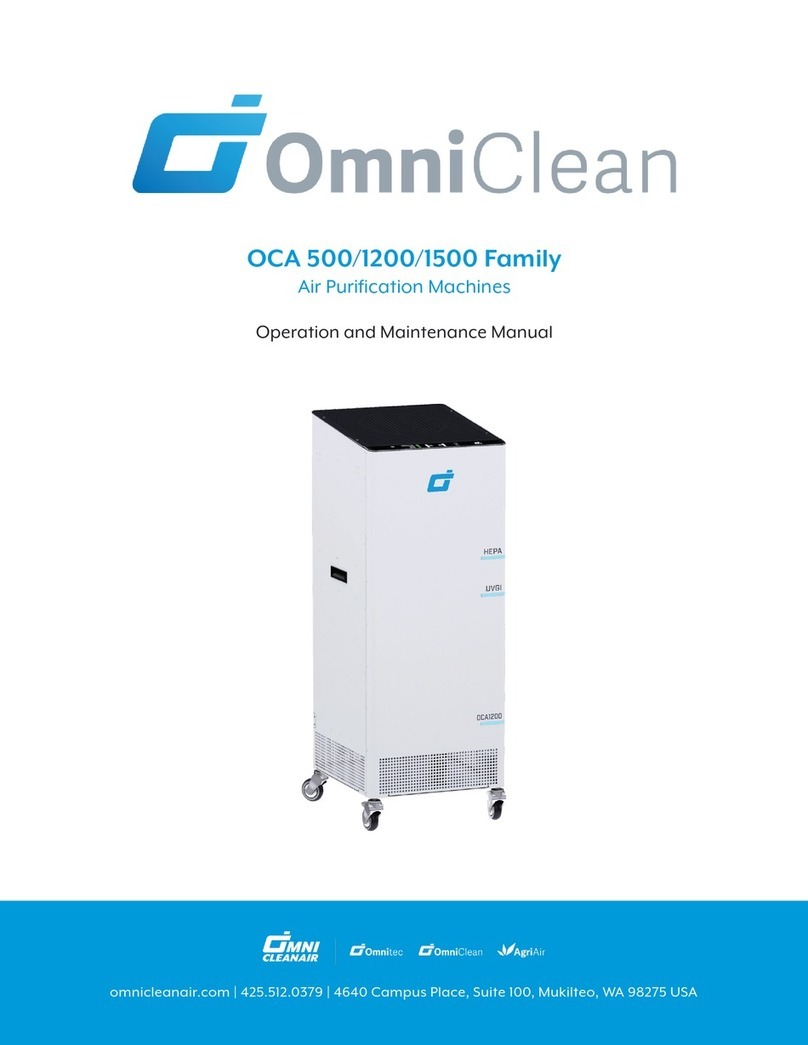
Omni Clean Air
Omni Clean Air OCA 500 Operation and maintenance manual
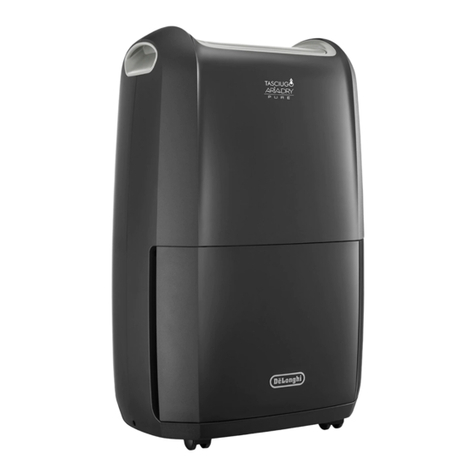
DeLonghi
DeLonghi DDSX 220WFA manual
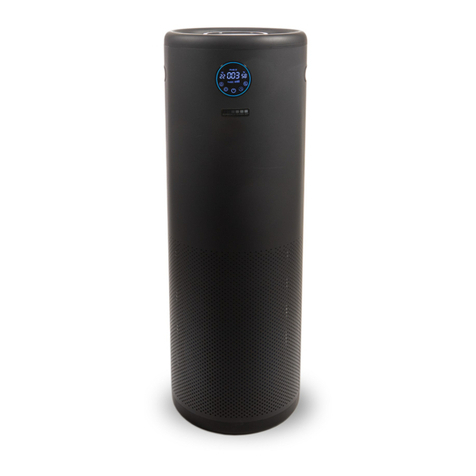
Surgically Clean Air
Surgically Clean Air JADE2.0 Operation manual
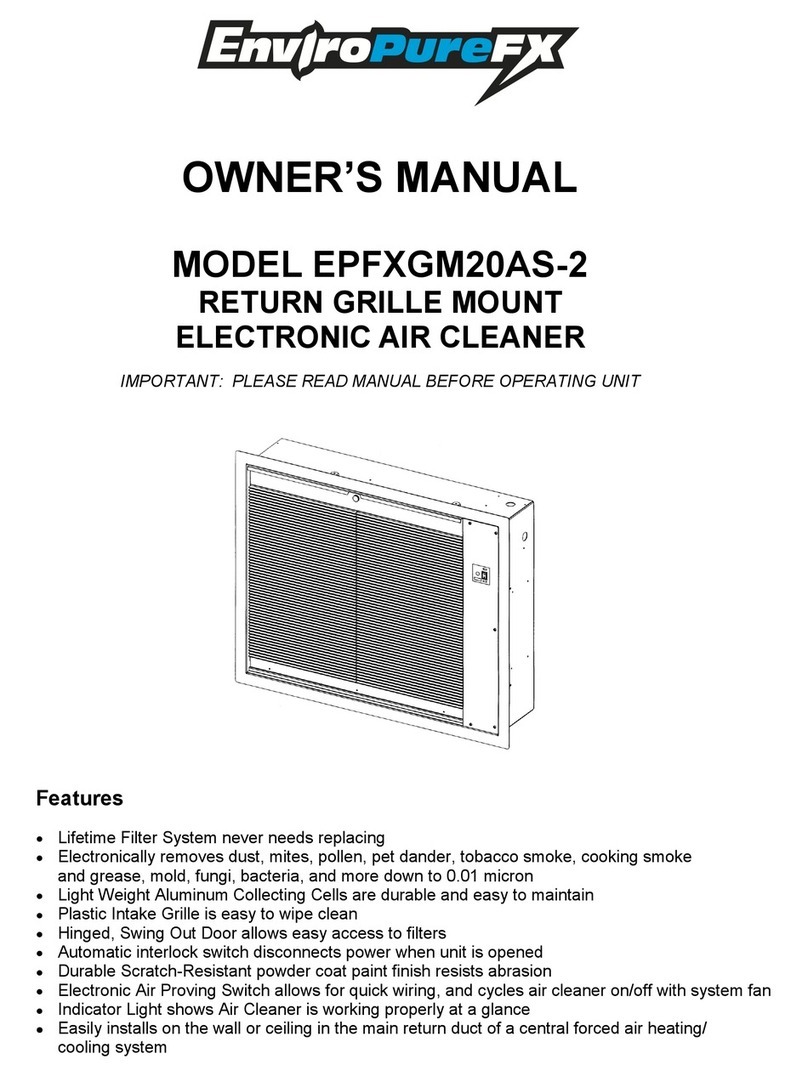
EnviroPureFX
EnviroPureFX EPFXGM20AS-2 owner's manual

Woodstock
Woodstock Shop Fox W1830 owner's manual
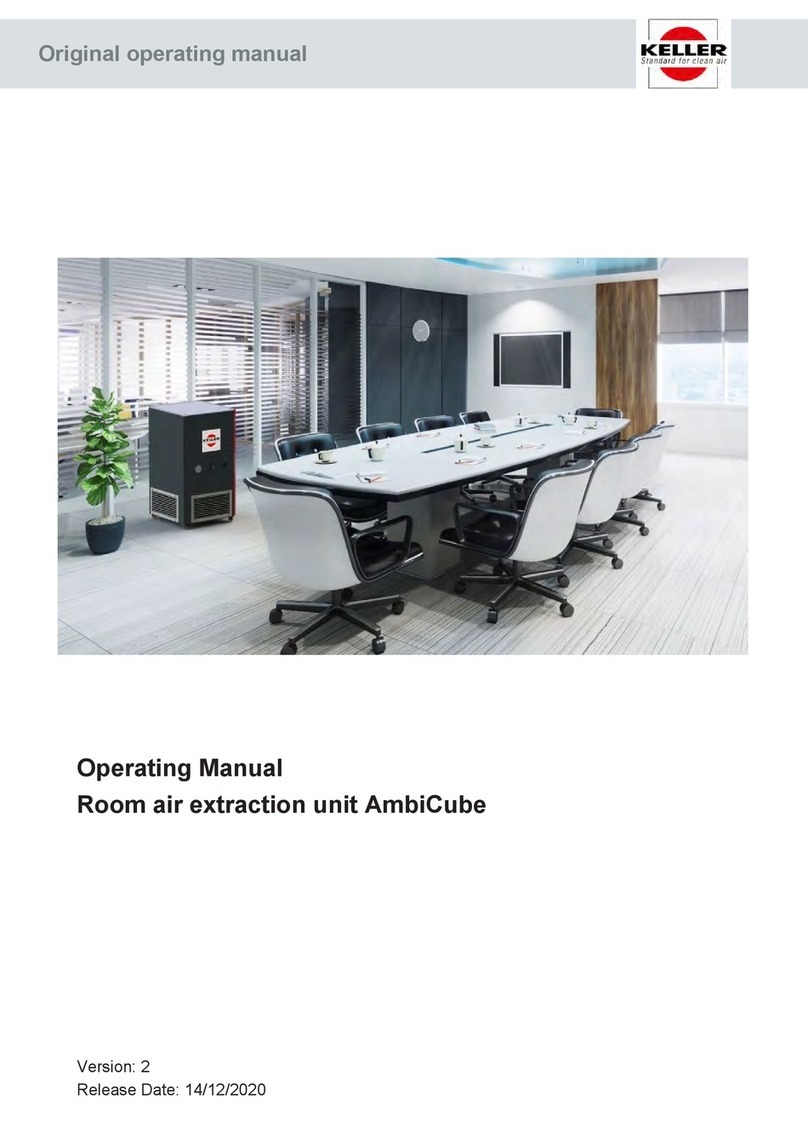
Keller
Keller AmbiCube operating manual
